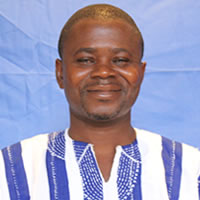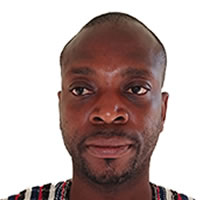Education
The education sector since the start of the education reforms has been driven by several objectives including those aimed at closing the gender gap in access to education as well as improving the quality of education. There was also a commitment to providing free quality education at the basic level to all children of school going age by the year 201. These goals and objectives are identical to the Millennium Development Goals.
The District is endowed with 60 Nursery Schools with an enrolment of 5,060; 61 primary schools with enrolment of 10,319 and 42 Junior High Schools (JHS) with 3,666 students as well as 5 Senior High Schools (SHS) with enrolment of 3,009 students as at 2014. There is also one Nursing Training School at Krobo.
School Enrolment and Teachers
Enrolments in schools have witnessed significant growth since 2009. Table 1.9 show the gross enrolment figures and staffing levels in the District for both Public and Private schools at the basic and SSS levels.
The rapid growth rates in enrolment over the years have resulted in a significant deficit in school infrastructure namely classrooms, workshops and furniture. The introduction of the capitation grant in 2005 and the school feeding programme especially has led to tremendous increase in enrolment at all levels of basic education in the public schools. The resultant effect is an increase of 8,720 pupils at Nursery level, 22,039 pupils at Primary level and 8,084 pupils at Junior High School levels.
While this trend is positive for the District’s schools enrolment drive, the policy has necessitate the urgent provision of additional 1,500 pieces of dual desks and 400 pieces mono desks. 100 additional classrooms are urgently needed to address the acute situation at the basic level, which has compelled authorities to hold classes in the open, under trees.
It is also to address the overcrowding in classrooms leading to poor teaching and learning and to maintain the momentum of enrolment and retention at the basic level.
School Quality
Pupil-Teacher Ratio (PTR)
The Pupil-Teacher Ratio (PTR) of all levels show 28:1 for the Nursery/KG, 25:1 and 12: 1 for the Primary and JHS respectively. However, there is uneven distribution of teachers in the District in favour of the urban areas. What is required is the rationalisation/redistribution of teachers by the Education Directorate to ensure that every school gets its fair share of teachers, especially in the deprived areas.
Teacher Qualification
The Nursery/KG levels have only 32.20% qualified or trained teachers, with 56.15% qualified or trained at the Primary level. The Junior High School level records the highest number of qualified staff with 74.40%. The issue of high proportion of untrained teachers needs to be addressed, particularly at the basic level, to improve the quality of education. Hence the policy of sponsorship for Teacher-trainees by the district needs to be vigorously pursued.
Basic Education Certificate Examination (BECE)
The percentage pass in the BECE was 36.80% in 2014. The BECE pass rate has been considered very low and not encouraging. This calls for concerted efforts by all stakeholders to further improve the results.
Teacher Housing
Poor and inadequate teacher accommodation, especially in deprived communities was identified as one of the problems for refusal of teachers to accept postings or stay in some communities. Lack of suitable accommodation and other basic social amenities has resulted in about 40% of teachers commuting daily from the relatively endowed urban centers especially Tuobodom, Offuman, Aworowa to their schools in the deprived areas. Sometimes teachers have to commute from Techiman, the closest Municipality to schools. This results in lateness, absenteeism and loss of pupil-teacher contact hours.
There are two (2) teachers’ bungalows in the District. However, these are woefully inadequate, considering the enormity of the housing problems in the District. There is also urgent need to address the teacher housing problem to attract and retain teachers to the deprived communities. Other problems confronting the education sector include poor water and sanitation facilities especially at the basic levels. Many schools lack potable water and gender friendly sanitary facilities. Poor sanitation facilities and public hygiene may result in poor health status. This may lead to high rate of absenteeism due to ill-health and high drop-out rate.
Literacy and Education
Literacy generally refers to a person’s ability to read and write in any language. In the 2010 census, a person was considered literate if he/she could read, write and understand a simple statement. The questions relating to literacy was asked of persons 11 years and older during the 2010 PHC.
Literacy
Table 3.9 shows persons 11 years and older by their sex, age and literacy status. Out of a total number of 42,118 of the population 11 years and older in all the different age groups 30,854 (73.3%) are literate while 11,264 (26.7%) are not literate. In general, the older folks in the District have lower literacy rates compared with the younger folks, thus, literacy decreases with as age advances; from age group 11-14 there is a steady decline of the literate population to age group 65+.
The population who could read and write English and Ghanaian language have the highest proportion (79.3%) of the total literate population. Literacy in English and Ghanaian Language is high across all age groups ranging from 76.0 percent in the age group 11-14 to a high of 83.6 percent in the age group 55.59. Literacy in English and French however, is very low with less than one percent being literate in both languages among all age groups.
In terms of sex variations not much difference is observed as both sexes follow a pattern similar to the district pattern.
The economically not active population is made up of those who during the reference period did not work and were not seeking for work. They are classified by reasons for not being economically active. They include; homemakers, full-time students, retired persons and people with disabilities who were unable to work because of their age or disability.
Table 4.1 shows that, out of the total population of 36,359 persons who are 15 years and older, 27,317 representing 75.1 percent is economically active whereas 9,042 persons representing 24.9 percent is economically not active.
The 2010 PHC reported a very low unemployment figure of 1,204 in the district in the economically active population. Among the economically active population, 95.6 percent are employed with 4.4 percent being unemployed. The unemployed persons are also made up of those who are available and seeking work for the first time (72.7%) or having ever worked before but are now available and seeking for work (27.3%).
There is very little difference in the proportion of economically active males (76.6%) and females (73.8%). About the same proportions of males (96.6%) and females are currently employed. Among the unemployed, more males (76.2%) are first time job seekers compared to females (70.6%).
However, large majority of the economically not-active population (90.4%) fall into three main categories namely full time education (58.9%), did household chores (21.7%) and too old/young to work (9.8%).
With regards to sex, it is interesting to note that, amongst the economically not active males, majority (71.9%) are in full time education followed by household chores (12.0%) and too old/young to work (6.4%). About four percent (4.3%) fall under disabled/sick with just a small percentage (2.0%) being as a result of pension and retirement.
The females also follow the same pattern. They are economically not active as because they are in full time education (48.5%) and their involvement in household chores (29.6%) as well as being too old/young (12.6%) to work. The least (0.9%) are pensioners/retired.
Date Created : 5/9/2019 7:14:33 AM






 facebook
facebook twitter
twitter Youtube
Youtube TOLL FREE 0800 430 430
TOLL FREE 0800 430 430 +233 593 831 280
+233 593 831 280 GPS: GE-231-4383
GPS: GE-231-4383 info@ghanadistricts.com
info@ghanadistricts.com Box GP1044, Accra, Ghana
Box GP1044, Accra, Ghana